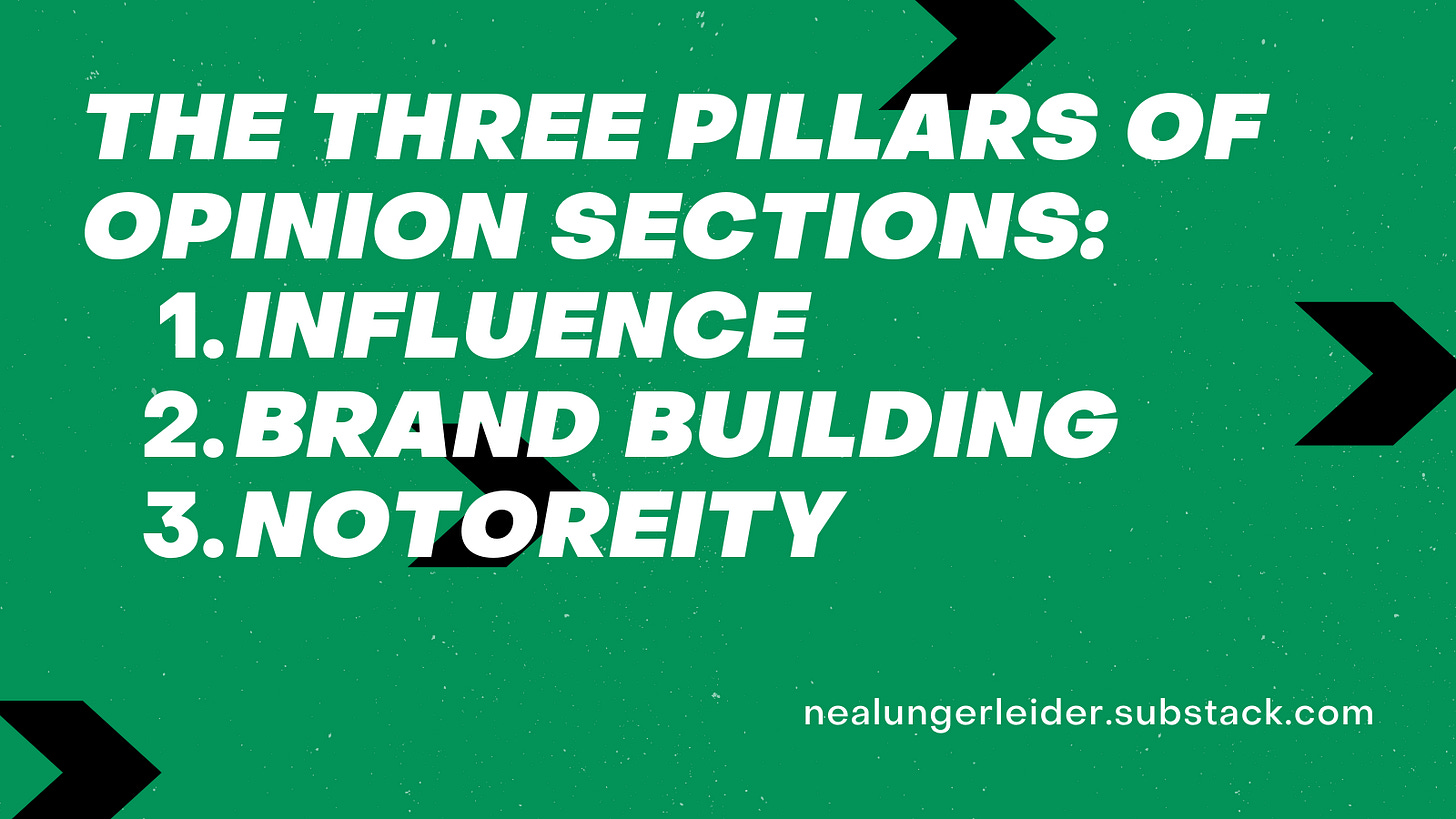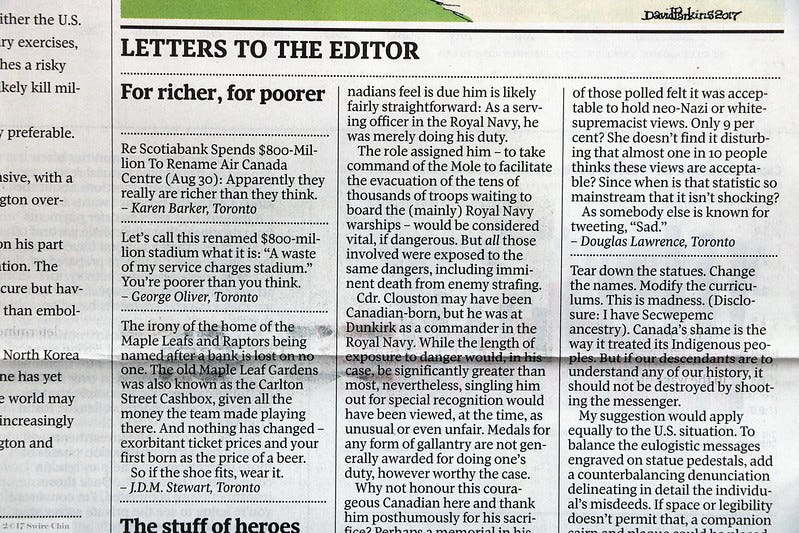When Newspapers Publish Bad Opinion Columns On Purpose
The only thing worse than being tweeted about is not being tweeted about: The Neal Ungerleider Newsletter #65
Over the weekend, the Wall Street Journal’s op-ed section raised a whole bunch of controversy with a column by Joseph Epstein arguing incoming First Lady Dr. Jill Biden shouldn’t be addressed as “doctor” because she isn’t a medical doctor. After the Journal was criticized for publishing the op-ed for… a whole, whole bunch of reasons, their Opinion Editor responded that criticism of the op-ed was politically motivated.


A few days before the Journal published that op-ed, the New York Times’ Parenting section generated a bunch of chatter with a column written by Sarah Prager, a woman of Jewish descent who does not consider herself Jewish, about why she doesn’t celebrate Hanukkah. Although not strictly an op-ed, the NYT Parenting section (as do others) publish plenty of opinion-y first person columns that fit overlap.
Both columns fail the workaday sniff test of reader worthiness: They’re not related to any pressing news story, they aren’t written by a VIP and aren’t part of any ongoing societal debate. But they succeed, mightily, in one important goal: Generating notoreity.
Let’s go through each goal. (And a quick sidebar on my bona fides: I’m a former op-ed writer for the Los Angeles Times who now gets paid to help clients write op-eds of their own and figure out what publications to publish them in. Media industrial complex, etc. etc.)
INFLUENCE: Influence is the ability of a publication to move the meter on any given issue. Influence can take many forms, and doesn’t necessarily overlap with readership numbers or ad revenue. For an A++ list publication like the New York Times or Wall Street Journal, influence can mean publishing an op-ed by the Vice President or Miles Taylor’s infamous “Resistance” anonymous op-ed.
Influence can also mean a political news site in Sacramento or Albany accepting an op-ed column on legislation that’s only read by hundreds of people, but where those hundreds of people are 99% legislators, legislative aides and lobbyists. Influence can also mean an industry news site accepting an op-ed on urgent supply chain, pricing, or business model issues for its readers.
In other words, this pillar means ability to move the conversation.


BRAND BUILDING: Every modern media outlet, from the most modest neighborhood news Facebook group to ESPN to the New York Times, doubles as a brand. Brand building means that your audience knows what to expect from your outlet and, more importantly, wants to consume the content you produce.
Newspapers like the Times, the Journal and the Washington Post have traditionally maintained a firewall between their day-to-day news coverage and the arguments in their op-ed section. In ideal terms, this means having separate editors for each and separate corporate processes/oversight/etc. In real life, this process is somewhat more complicated.
As a result, publications deliberately cultivate both brand voices of their own *and* (Ideally! Fingers crossed!) a reason for audiences to read the opinion articles they publish.
For instance, the Times opinion section veers center-left with a few ideological outliers and doubles as a set of small talk topics for the professional managerial class. The WSJ opinion section is reliably right wing and preoccupied with depicting capitalism as a value system and ideology, rather than as an economic system. The Washington Post’s op-ed pages have picked up lots of readership these past few years as an ideological home for anti-Trump Republicans and ex-Republicans.
This brand building technique also applies to non-newspaper media outlets that publish opinion articles. If I visit the sites of Vanity Fair, MEL, Vice, Vox or Jacobin, I have a pretty good idea of where the writers are coming from and what they’ll be arguing for/against.
In other words, this pillar means readers know what to expect.


NOTOREITY: A media outlet that doesn’t get attention has a very hard time succeeding as a media outlet. For outlets publishing opinion columns, that means strategic deployment of ragebait, clickbait, and Twitter-ready controversies.
One example is the decision to commission and publish Tom Cotton’s New York Times op-ed calling for the use of military force to stop civil insurrection. Another example is publishing opinion writers (think Bari Weiss and Bret Stephens at the Times or Andrew Sullivan and Jonathan Chait at New York) with a consistent ability to generate controversy on demand.
This tactic doesn’t always work; the New York Times published a column by Hong Kong politician Regina Ip justifying Hong Kong’s draconian national security law that was largely ignored outside of foreign policy and Hong Kong expatriate circles. Media outlets also run the risk of diluting the effectiveness of ragebait columns if deployed too frequently.
Notoreity is especially important because the legacy currency of opinion column effectiveness—mentions on radio/tv talk shows or by politicians and business figures—is a scarce currency but the new currency of opinion column effectiveness—rehashing, riffing and criticizing on social media and podcasts—is a currency that’s abundant and accepted everywhere.
This pillar is crucial because it means dominating the conversation.
Which brings us to…
(Image via Visualhunt)
LETTERS TO THE EDITOR ARE DEAD. LONG LIVE SOCIAL MEDIA:
The reason why ragebait is so damned important to the opinion media model has to do with a systemic change in how readers interacted with publications.
Until 2010 or so (and this timeline varies depending on the media outlet), audiences interacted with media outlets primarily via mail. Although there was a large scale shift from post mail to email in the early 2000s, the reader mail model—where individual readers sent letters to the editor that were either considered for publication, used internally as barometers of public opinion, or both—was dominant.
However, online article comments and social media have pretty much obliterated and replaced the old letter to the editor model. Instead of publishing letters to the editor in semi-private, readers can air their support or greivances in public while gaining audiences of their own in the process.
Both formats have structual problems (the nightmare of online article and YouTube comments is a subject for another newsletter, and unpacking the metadiscussion of newspaper/magazine articles on Twitter could fill a damned book), but—for both the readers of opinion pieces and the outlets publishing opinion pieces—is far more satisfying.
TLDR: That bad take you read was designed 1000% just for Twitter.
FURTHER READING:
Matthew Sheffield on why center-right pundits pivot towards Trumpism for purposes of audience building.
Josh Sternberg on the role of newspaper op-ed sections.
Things I’ve Enjoyed Lately:
Chris Do’s YouTube video on How To Run A Profitable Business & Make Money.
Ernie Smith on the experimental online newspapers of the early 1980s.
Johnny Cash’s version of Sunday Morning Coming Down.
One last thing—observant readers may have noticed this newsletter has a new format this week.
I’m switching the newsletter to a 2x a week format with essays/original articles publishing on Tuesdays and a separate weekend mailing for links and things to read.
Without getting too much into the weeds about formatting/UX/designing for Substack, newsletter consumption on mobile vs desktop and all that fun stuff, it made a whole lot of sense to split the newsletter in half with a more flexible format.
And there we go.
That’s it for this issue. Email me here and please don’t hesitate to contact if I can be of assistance. Thank you for taking the time to read this damned thing. And donate to the Chicago Furniture Bank.
Love and coffee,
Neal
About This Newsletter: Neal Ungerleider is a strategic communications consultant who works with individuals, agencies and brands. He writes this weekly newsletter about the media comminucations industrial complex and hopes that you found it of use. Check out his bio, his portfolio, and current projects.
Connect on Twitter or LinkedIn and learn more about at nealungerleider.com. To reach Neal, reply to this email or drop a line in the comments.









